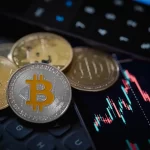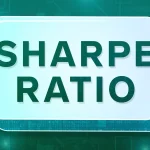
The cryptocurrency market is on fire. People have amassed billions through trading crypto assets – but is this the right path for you?
Answers will depend on your risk tolerance, market knowledge and investment goals. Let’s take a closer look at both markets to explore their differences; forex is more tightly regulated than crypto and may help prevent pump-and-dump schemes from emerging.
What is Forex?
Forex (foreign exchange) refers to the process of exchanging one currency for another. A country’s economic standing – as measured by factors like unemployment or manufacturing output – can influence how its currency compares against others.
A country’s currency often fluctuates depending on its economic strength and global demand for its goods and services, so international investors can use Forex markets to speculate whether a particular currency will increase or decrease in value.
Banks and financial institutions make money off forex trading by marking up or down their FX rates offered to customers; it’s crucial when searching for the best deal to compare apples-to-apples when shopping around for the ideal exchange rate provider.
The Forex futures market is centralized and traded on exchanges like Chicago Mercantile Exchange, enabling investors to purchase or sell contracts that will be fulfilled at later dates and prices. Retail traders do not participate in this market.
What is Cryptocurrency?
Cryptocurrency is a digital form of money that operates online and facilitates near instantaneous global transfer for low fees. Unlike traditional currencies, there is no limit to how much can be transferred at one time and transactions are highly encrypted for privacy. There are currently over 1,600 cryptocurrencies in existence including Bitcoin, Ethereum and Litecoin; with more being created daily.
The value of cryptocurrency depends on supply and demand; with demand determining how many people are willing to buy or sell the currency. Many use crypto for shopping purposes while others view it as an investment with potential for huge returns. Without being tied to any tangible asset backing them up, cryptocurrencies can be extremely volatile; yet they provide opportunities for financial freedom around the globe and safe alternatives to dysfunctional fiat currencies. For more information about cryptocurrencies watch Simplilearn’s Cryptocurrency Explained video.
How to Trade Forex
If you’re thinking about starting Forex trading, choose a reputable broker with competitive spreads and fees. NerdWallet’s rankings of online brokers and robo-advisors take several factors into consideration, including minimum deposits/accounts/investment choices/mobile app capabilities/customer support etc.
While both forex and crypto markets are vast, it’s essential that you focus on certain assets to increase your odds of success. For instance, seven major currency pairs account for over 68% of total market trading volume – providing narrow market niches to target.
As in other markets, cryptocurrency trading works on lot sizes: micro lots are 1,000 units; mini lots cover 10,000; standard lots have 100,000. When starting out in cryptocurrency trading, beginners should stick to micro and mini lots due to larger lot sizes being riskier and can lead to significant losses for novice investors. Also remember that trends change periodically so it is wise to stay abreast of news or events which might impact prices.
How to Trade Cryptocurrency
As with any tradable asset, cryptocurrency prices are determined primarily by supply and demand: when interest in a coin increases dramatically, its price soars while when demand decreases sharply it rebounds back down again.
Cryptocurrency trading can be an extremely risky venture, so only invest with money that you can afford to lose. Furthermore, diversifying your portfolio with coins from various companies so as not to expose too much of your capital at once.
To begin trading cryptocurrency, open up a brokerage account that offers the digital assets you wish to trade and deposit with your chosen payment method. When trading, make sure to review any fees that may incur, especially those associated with deposits and withdrawals – the latter could incur fees as well. Once you have an account you can trade CFDs on various non-physical currencies on tastytrade; get $30 in your verified trading account on your first deposit!








